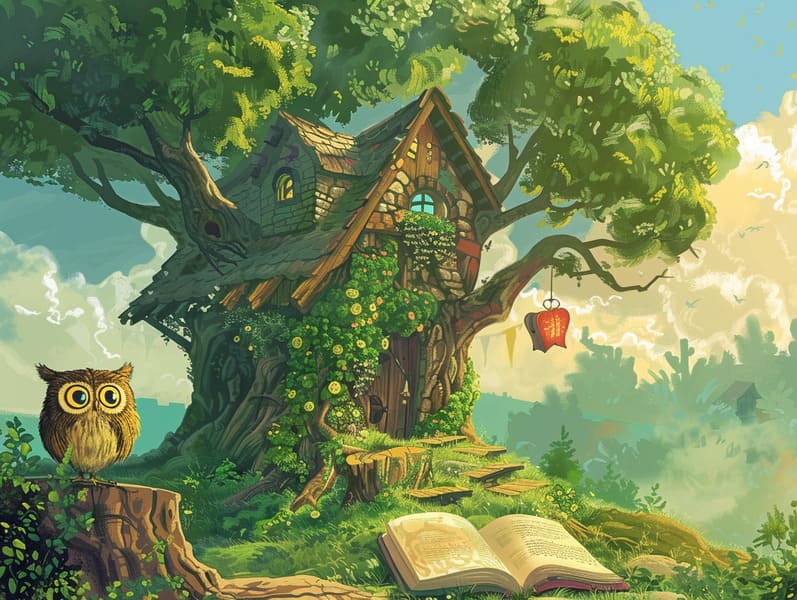The Evolution of Fairy Tales and Its Unending Radiance.
The Evolution of Fairy Tales and Its Unending Radiance.
Blog Article

Classic fairy tales have historical significance. These tales have been recounted from one generation to the next centuries before they were ever written down. They came from a variety of cultures, including Middle Eastern traditions. They were initially passed along among grown-ups, often carrying themes and messages relevant to the societal norms and beliefs of the time.
The Brothers Grimm, Jacob and Wilhelm, were among the first to collect many of these beloved stories. Their volume, "Grimm's Folk Tales," included tales like "Cinderella," "The Story of Hansel and Gretel," and "Schneewittchen," which have since become essentials in the world of traditional fairy tales. Similarly, Hans Andersen's charming fairy tales, such as "The Mermaid," and "The Duckling that Could," have touched hearts worldwide, establishing their place in the pantheon of treasured fairy tales.
Despite their historical roots, these tales remain as significant as ever, especially as children's bedtime stories. These enchanting tales are now available in diverse formats, including colorful picture books, captivating animations, and free fairy tales online.
Their lasting presence can be attributed to several charming aspects:
Life Lessons: Traditional fairy tales often illustrate important moral lessons. Stories like "The Tale of the Boy Who Cried Wolf" teach the virtue of being truthful, while "The Tortoise and the Hare" exemplify the benefits of perseverance and humbleness. These stories offer the young clear distinctions between virtue and vice, guiding their moral compass in a tender yet impactful way.
Compassion and Knowledge: Ancient fairy tales frequently depict heroines facing challenges and problems, urging audiences to identify with their struggles and champion their triumphs. For instance, "Beauty and Her Beast" shows us the significance of appreciating inner worth to appreciate the real character of a person, strengthening perception and understanding.
Cultural Comprehension: Many fairy tales are rooted in the cultural contexts from which they grew. Exploring these fairy tales can provide intriguing perspectives into different societies, building a sense of global understanding and recognition.
Creativity and Fantasy: The fanciful elements in classic fairy tales—talking animals—stimulate children’s creative dreams. These tales transport readers to enchanted realms, provoking fantastical thinking and a sense of wonder that endures a lifetime.
Old fairy tales are not only delightful but also informative. They provide spellbinding tools in cultivating various mind and heart abilities in young ones. When timeless fairy tales are narrated, they promote linguistic abilities by bringing new vocabulary and elaborate sentence structures. This practice also boosts hearing perception and attention span, as young readers keep up with the story, expectant to see what happens next.
Furthermore, analyzing the themes and characters of fairy tales can improve reasoning skills and reasoning skills. Little ones are shown to spot patterns, anticipate outcomes, and comprehend cause and effect. These conversations also contribute to young readers voice their thoughts and feelings, contributing to their emotional intelligence.
In today’s modern era, the abundance of digital storybooks has made these tales more reachable than ever. Online resources and programs feature vast collections of children's fairy tales that can be looked at or listened on anytime, anywhere. Fairy tales read aloud are particularly liked, supplying an engaging way for children to take part in these bewitching tales. Sound books and read-out-loud stories take characters and settings to life, often augmented by entrancing soundtracks and songs that heighten the story journey.
The persistent attraction check here of old fairy tales lies in their ability to modify to the present while staying true to their key morals. Contemporary versions of these tales often integrate more inclusive characters and modern settings, making them meaningful to today’s audience. However, the fundamental themes of boldness, charity, and righteousness remain unchanged, continuing to impact audiences of all ages.
Timeless fairy tales also offer a sense of familiarity and recognition. They supply a well-ordered narrative with a recognizable beginning, middle, and end, often drawing to a close with the closure of conflicts and the triumph of morality over wickedness. This predictability can be encouraging for little ones, granting a sense of steadfastness in an dynamic world.
Classic fairy tales continue to fascinate and teach new generations, maintaining their grace and pertinence in modern society. As children's bedtime stories, they impart upon a perfect blend of wonder and wisdom, aiding moral values, empathy, and creativity. The availability of internet fairy tales and the widespread nature of fairy tales recited ensure that these classic tales remain acquirable to new generations.
By defending and making known these fairy tales, we continue to admire the rich tapestry of myths and cultural heritage. Whether you are seeing a artistically illustrated book, exploring a online collection, or playing an sound book, the splendor of Grimm's fairy tales is always within reach. These stories point out of the unceasing influence of storytelling and its ability to connect us across time and space.
Whether you are viewing a vividly illustrated book, experiencing a electronic collection, or listening through an sound book, the radiance of bedtime fairy tales is always within reach.
These tales remind us of the perpetual strength of fairy tales and its ability to bond us across epochs and places, establishing a link that fascinates and enlightens alike.